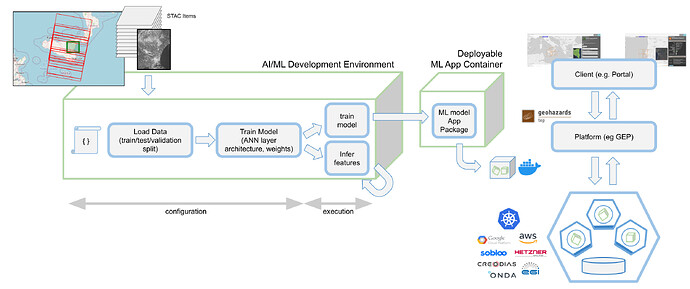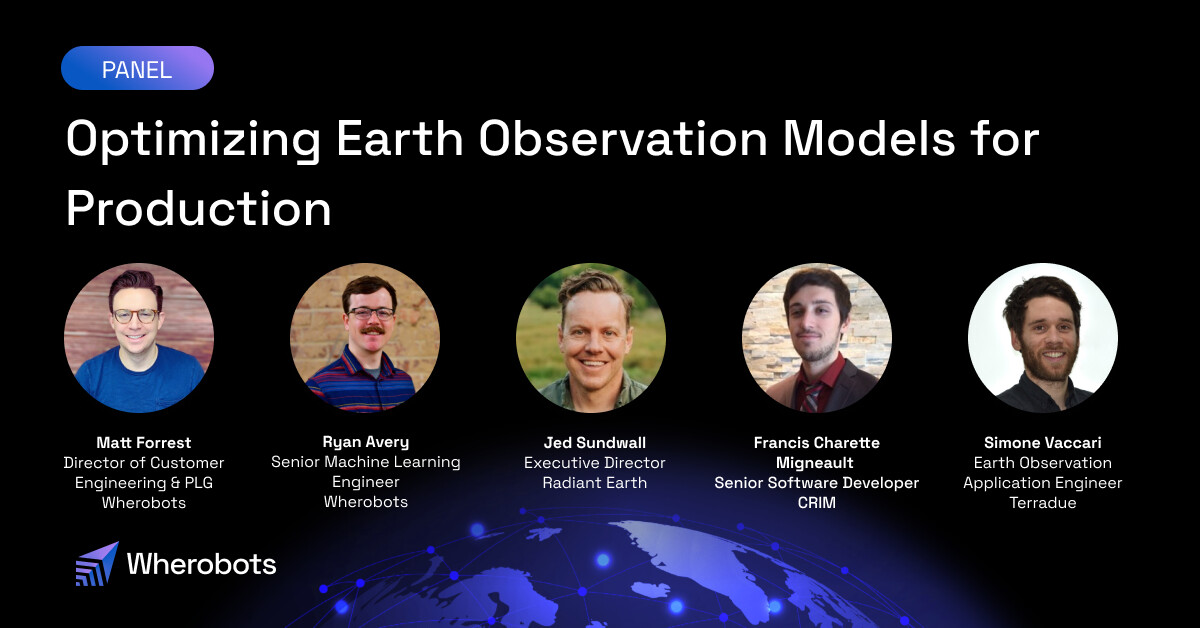Over the past year, Terradue has significantly enhanced the Geohazards Exploitation Platform (GEP) by integrating a comprehensive Machine Learning Operations (MLOps) framework. This advancement has transformed GEP into a AI-ready platform capable of managing the entire ML lifecycle, from data ingestion and model creation to deployment, monitoring, and continuous improvement.
By embedding MLOps directly within its cloud-native architecture, GEP now offers scalable and flexible AI capabilities that enable users to deploy advanced geospatial AI applications tailored specifically for terrain motion analysis, disaster risk reduction, and environmental monitoring.
This allows GEP to provide end-to-end support for creating and operationalising AI models. Users can ingest and curate datasets directly in the platform, facilitating streamlined model development and training workflows. Once trained, AI models are deployed seamlessly into operational scenarios using automated deployment pipelines. Continuous monitoring ensures that models maintain performance, accuracy, and reliability, detecting issues such as data drift or decreased accuracy, and triggering automatic retraining when needed. The image below illustrates GEP’s integrated MLOps workflow, showcasing data ingestion, model training, feature inference, and scalable deployment on cloud infrastructures.
A Comprehensive MLOps Framework for Earth Observation
The newly integrated MLOps framework within GEP offers advanced, cloud-native infrastructure, enabling users to seamlessly manage the complexities of developing, deploying, and maintaining AI models for geospatial analysis. It streamlines the end-to-end ML workflow, comprising:
- Data Preparation and Management: Efficient handling of large EO datasets with automated splitting for training, testing, and validation.
- Model Development and Training: Tools and environments that facilitate the development of new ML models, along with tracking and management functionalities using frameworks like MLflow.
- Scalable Deployment: Automated deployment of trained models into operational environments as cloud-native microservices, compatible with standard geospatial service interfaces such as OGC APIs.
- Continuous Monitoring and Adaptation: Automated pipelines to monitor deployed models for issues such as data drift or performance degradation, triggering re-training processes to maintain optimal performance.
See some example of these capabilities and how GEP allows users to develop and deploy ML models in the webcast below (webcast link).
Get Started with AI on GEP
The GEP AI capabilities are fully accessible to researchers, public sector entities, and private organisations. Users with sponsored access via the ESA’s Network of Resources (NoR) program can leverage these advanced features without initial financial commitment, making it easier than ever to explore and validate innovative AI-driven geospatial applications.
Whether you are developing new algorithms or deploying existing models, GEP offers comprehensive tools and resources to maximize the impact of AI in geohazard monitoring and response.
For more information on how to utilize GEP’s AI capabilities or to explore collaboration opportunities, please reach out to us at contact@geohazards-tep.eu
Explore the platform and learn more at: Geohazards TEP




